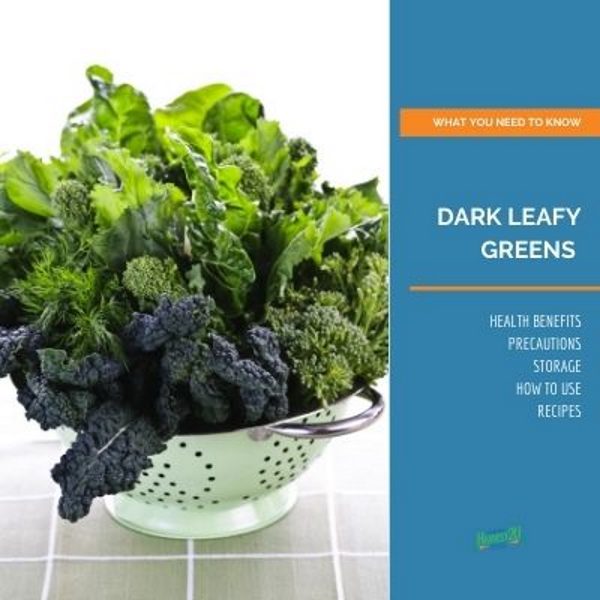
Dark Leafy Greens Deserve a Place on Your Plate
Dark Leafy Greens are considered superfoods for a good reason. They are low in calories and carbohydrates but high in various nutrients, including fiber, folate, vitamin C and K, and iron and calcium.
They are also loaded with carotenoids, antioxidants that protect cells, promote heart health, and block the early stages of cancer. In fact, DLGs may be one of the best cancer-preventing foods. (source)
Greens are available, in some form, throughout the year, with many able to withstand freezing temperatures. So, it is easy to incorporate fresh, locally grown organic greens (like the ones delivered by Harvest2u).
As great as greens are, eating too many leafy greens is possible. Overconsumption of DLGs can cause problems for individuals on blood thinners because vitamin K can thicken the blood. They also contain oxalic acid which can cause abdominal pain, kidney stones, and other nasty side effects. But, one would need to eat about 7 pounds of greens to consume enough oxalic acid to be harmful.
How to make greens less bitter
For some people, dark leafy greens are too bitter. Some varieties such as kale and collard greens are more bitter than others such as spinach and lettuce.
If you are put off by the bitterness, you can try less bitter varieties or prepare the greens in a way that balances out the bitterness. By accentuating the other tastes like savory, salty and sweet the bitterness will not be as noticeable.
A few ideas:
- add acid such as lemon juice or vinegar
- cook with onions and garlic
- add salt or salty ingredients such as bacon or anchovies
- add a bit of sweetener at the end (brown sugar, honey, and molasses are good choices)
- blanch (cook quickly water, then strain and use) or braise (cook low and slow in liquid)
Substituting Greens
Different dark leafy greens can be used interchangeably for the most part. The important thing to keep in mind is the sturdiness of the leaf.
Hardier leaves like kale and collards benefit from a longer cooking time than softer greens like chard and spinach. When I made stuffed chard rolls the cooking time had to be reduced and leaves doubled up to prevent them from falling apart, while stuffed cabbage and stuffed grape leaves both need a longer cooking time to soften the leaves.
To use tough greens in a salad either massage them to break down tough fibers or slice into very thin ribbons (chiffonade).
Storing Dark Leafy Greens
Store greens in an airtight container (or bag) in the refrigerator away from fruit that give off ethylene gas which will make them wilt prematurely.
Dark Leafy Greens Recipes
The USDA recommends most adults consume about 3 cups of dark leafy greens a week. Which may sound like a lot all at once. But, you can juice them, puree them in smoothies or soups, toss them in a salad, saute them and add to scrambled eggs or stir-fries, braise them as a side dish or mix them in a casserole.
Here are a few recipes to try that may help you enjoy dark leafy greens more than you thought possible.
Drinks
Appetizers
Side Dishes
Main Dishes
- Chard and Mushroom Toasted Cheese Sandwich
- Dandelion Green Soup
- Dark Leafy Greens with Spicy Fettuccine
